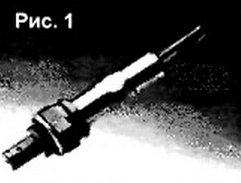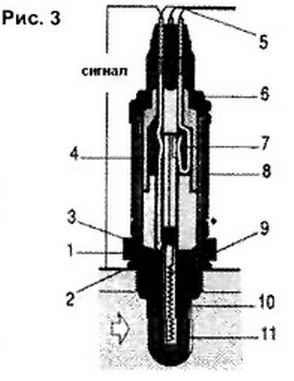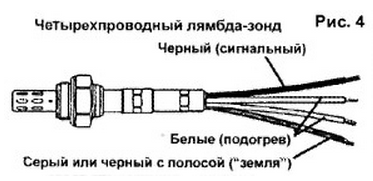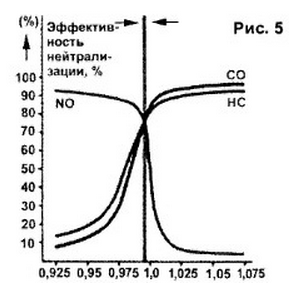From 1 March 2006, Russia introduced the standard "Euro-2". According to new requirements, the CO content in the exhaust gases must not exceed 0.5% on idling and 0.3% higher. In Europe, this standard was introduced with January 1996 (today, leading manufacturers are already preparing for the transition to Euro-5). This standard imposes strict requirements on all elements of the power supply system of the engine, as the engine speed and quality fuel. Even if the engine is perfectly good, you need to very accurately to withstand the ratio of the air/fuel mixture.
For optimum combustion of 1 kg of fuel required to 14.7 kg of air. Then the lowest content of toxic substances in the exhaust, maximum efficiency and power characteristics of the engine. This composition the mixture is called "stoichiometric", and the ratio of the stoichiometric composition mixture to existing denoted by the letter λ. If λ (excess air) - enriched. During the technical inspection of vehicles, this option is controlled (must be within 0,97... 1,03).
Abroad for over 20 years to maintain the stoichiometric composition apply the device operational control of the combustion process (product combustion) feedback. This became possible with the advent of electronic control fuel injection and ignition timing. Today almost every car on the market of developed countries, are equipped with such a control system.
For operation of this system in the exhaust manifold of the engine is placed in a special oxygen sensor, which is called "lambda probe" (Fig.1).

This improvement was a landmark in automotive history. Working the sensor element is a porous ceramic material based on zirconium dioxide, covered by sputtering platinum. The exhaust gases flow around the working surface. The sensor responds to the difference between the level of oxygen in the exhaust gases in the atmosphere, producing at the output corresponding to the potential difference.
The first "lambda probes were resistive, i.e. change their resistance. Modern sensors are working as threshold elements: the output voltage (Fig.2) may adopt either a high logic level (rich mixture), or low (lean mixture). The reaction rate is so great that the rise time of the signal can not be considered.

The electronic control device (DRE) engine with a certain frequency (not less than 2 times per second at idle and the bowl for increased speed the engine and some other parameters) takes the signal from the lambda probe and compares with the stored value. If the current value differs from given (optimal corresponding to the selected operating mode), the controller issues a command to increase or decrease the duration of injection fuel injectors, ie is fine adjust mode the engine under the current situation to achieve maximum fuel economy and minimize harmful emissions.
Sensor operation is only possible at a temperature sensitive elements not below 300...350°C (otherwise it won't generate the signal), and the maximum temperature can to reach 950°C. the First modification "lambda probe" tried to have as close to the exhaust manifold to ensure a speedy warm-up and enable the sensor to work.
Modern probes are equipped with a special heating element, and place installation was not as critical. The sensor device shown in Fig.3.

Until recently, the potential difference was shot between the signal wire and "mass". Such sensors are screwed into the exhaust pipe using special comprovide ing grease. Over time, the probability of loss of contact increased. Last modification devoid of this shortcoming. Now the "mass" bred a separate wire (Fig.4).

The levels of signals provided by most of the sensors are about the same, although there are and exceptions (!). The low level of the signal corresponds to a voltage within 0,1...0,2 V. high to 0.8...0.9 V. Brand sensors are quite reliable. The term their service is 80... 160 thousand km mileage. As we age sensor voltage corresponding to a logic low level, increases (0.25 In), and the high - reduced (less than 0.65 In). Also increases ""inertia" of the sensor. If "response" is more than 250 MS lean fuel mixture and more than 450 MS - enriched, the sensor is considered to be malfunctioning. This averaged data. When testing it is advisable to follow data on specific sensor installed on the vehicle, but such information, unfortunately there is little published.
In the service station for inspection "lambda probe" special motortester, but at home you can use a normal oscilloscope. Socket connection to the sensor is usually located on the main wiring harness that runs under baffles for draining water from the windshield. The sensor contains very fragile and sensitive components. When servicing the exhaust system cannot be subjected to shock and rinse any detergent or the solvents. When installing the sensor cannot be used sealants, polymerizing at room temperature, and containing in its composition silicone (on the threads of the new sensor already coated with a special contact grease).
Premature failure of the "lambda probe" is usually caused by:
- the use of leaded gasoline or ad hoc additives;
- multiple unsuccessful attempts to start the engine, which resulted in the outlet conduit accumulate pair of unburned fuel capable ignite with the formation of a shock wave;
- overheating of the tip of the sensor, caused by an interruption in the ignition impaired in the control system ignition timing when the engine a long time works on pereobogaschenie fuel mixture;
- excessive "left." when the tachometer is in the "red zone".
Possible signs of failure of the oxygen sensor are:
- the signal on-Board diagnostic system (ignition warning light "CHECK ENGINE" and fixing certain fault codes in memory [1]);
- short-ignition warning light "CHECK ENGINE" when accelerating of the vehicle;
- unstable operation of the engine at idle;
- higher fuel consumption and deterioration of vehicle dynamics;
- the crackle and smell of burning in the area of installation of the catalyst, as well as enhancing temperature or heating the catalyst to an incandescent state. The characteristic smell rotten eggs present in the exhaust when you hit the big catalyst the amount of unburned fuel.
Oxygen sensor - not a standalone unit. He works in connection with catalytic Converter exhaust gases (many car owners hurt stings its price: 400...600 dollars). Catalytic Converter - the three-part device intended for the oxidation of toxic substances (carbon monoxide, hydrocarbons and nitrogen oxides) to carbon dioxide, nitrogen and water as a result of the catalytic reaction. Optimum catalyst (neutralization approximately 80% of all components) is only achieved when the engine is operated at stoichiometry century the composition of the mixture (Fig.5).

Loss or distortion of the signal from the lambda probe increases content of toxic substances in the combustion products and, consequently, to a sharp to reduce catalyst life.
It is worth noting that until recently quite often practiced dismantling faulty "lambda probe" and a catalyst for further installation pipe insertion. Thus it was "modified" a large number of foreign cars due to the impossibility of making costly repairs. But with the introduction of new rules when passing inspection will be required and all equipment is functional, if the car was equipped with them regularly (at the manufacture).
Literature
Author: I. Nagovitsyn, p. Talagi-Arkhangelsk tank farm region.






